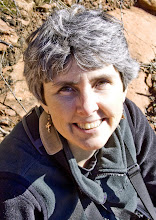Monday, June 16, 2008
Utah by Two Different IR Cameras
Sunday, June 15, 2008
Color vs. Black & White

 Both of these shots of petrified sand dunes in Zion National Park are processing of the same image. The top one has all of the color desaturated to leave only the lines and textures, while in the bottom one, the color is so bold that it becomes the story (with the textures becoming the subtext). The bottom one was done first in Photoshop and Photomatix with HDR processing, then the color was used in the "Black and White" command in Photoshop.
Both of these shots of petrified sand dunes in Zion National Park are processing of the same image. The top one has all of the color desaturated to leave only the lines and textures, while in the bottom one, the color is so bold that it becomes the story (with the textures becoming the subtext). The bottom one was done first in Photoshop and Photomatix with HDR processing, then the color was used in the "Black and White" command in Photoshop. The photo was taken along Highway 9, just before the Zion-Mt. Carmel tunnel (heading west). These are sand dunes that were once buried and became petrified. Even though the ripples look like wind blown sand, it is solid Navajo Sandstone.
Friday, June 13, 2008
An IR Kind of Day in Utah
This shot was with my old Olympus, only 2.1 megapixil and non-DSL. The light was perfect and at this moment the wind was rustling so gave some of the leaves a bit of a feathery look while the higher leaves were more still and clearer.
Subscribe to:
Comments (Atom)
